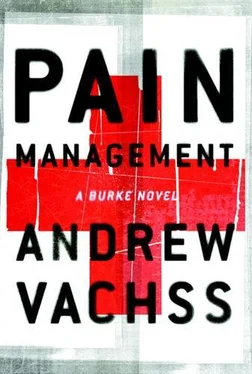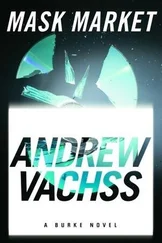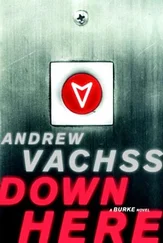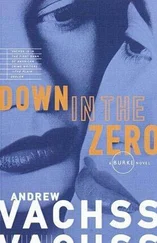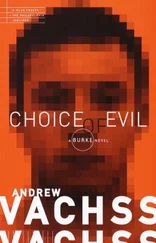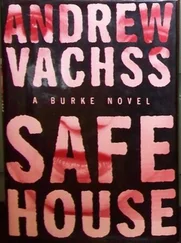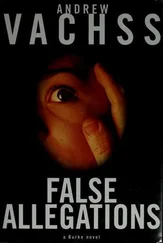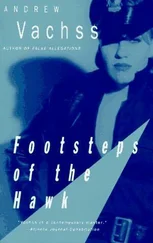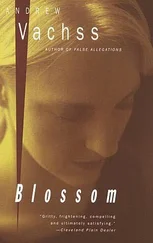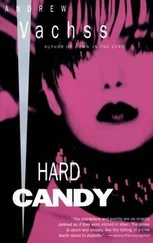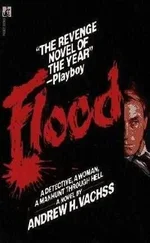She caught my look and blew it off with, “He’s about a hundred years old. . . . Israel. Funny name for a black guy, huh? All anyone knows is that he’s from Cleveland. He sets up in different places all the time. Word gets out, people come from all over. Then he just disappears again.”
“Like you.”
“Just because you don’t know where to look doesn’t mean someone’s disappeared.”
“Back to that, huh?”
“Why else would you be here? It’s not me you’re interested in.”
“I’m interested in what you have. What you say you have.”
“You think because I like . . . outfits, I’m not for real?”
“This is all blah-blah. You know what ‘prove in’ means?”
“Sure. Do you ?”
I leaned forward, looking for her eyes. “The way I figure it, I already have. I don’t know you. But you know me. Or, at least, enough about me to want to trade for something I’ve got. Or something you want me to do. If I’m wrong, just say so, and we’ll be done, right now.”
She didn’t say anything. I went back to my sandwich. Time passed. The night was full of sounds, none of them threatening. I washed the last little bit of perfect BBQ down with a hit of the tangy lemonade.
Still nothing from the woman. Maybe she was showing off her patience, the way she’d shown off other assets the first time we’d met. I wasn’t going to sit there and trade thousand-yard stares with her all night. I moved the white waxed paper my sandwich had come in to the side, folded the cardboard tray that had housed the coleslaw into an ashtray, and lit a cigarette.
“When this is gone, so am I,” I told her, taking a deep drag.
She took a breath. “Never mind the dramatics,” she said. “Come over to my car with me and I’ll tell you the deal.”
A different Filipino brought her Subaru around. She slipped him something; both of us got in. The dashboard and console for the floor shift were both covered in carbon fiber. I couldn’t see any surface that would reflect light . . . and wondered about that shadow I’d seen shifting in her car when I’d last dropped her off.
She drove a few hundred yards toward the river, found a big patch of gravel, parked. It was prairie-desolate out there; nothing but a few of the deserted-looking warehouses within a couple of hundred yards. No way for anyone to come up on us without being spotted. Another demonstration?
The woman hit a switch and both our side windows slid down. She turned off the ignition.
“This way, you can smoke.”
I didn’t say anything.
“What do you know about pain?” she asked softly.
“More than I want to,” I said, voice flat, deliberately distancing myself from where I thought she was headed.
“ Other people’s pain.”
“That, too.”
“I hate it,” she said. Quietly, the way a nun talks when she tells you about getting the call.
“Pain?”
“Yes,” she said sharply, as if I had been sarcastic. “Pain. That’s what I am. A painkiller.”
“I’m not following you.”
“Listen, and you will. I’m not talking about headaches. Or arthritis, or . . .” She took a deep breath, let it out. Made sure she had my eyes. “I mean bone-deep, searing, unbearable pain. Like when cancer really gets a grip. When you’re near the end from AIDS. When . . . when you’d rather be dead than suffer every single minute. And you know what a lot of those people get? Speeches. ‘You make your own pain. It’s in your mind. Just take yourself to a peaceful place. . . .’ Or they get what someone else thinks is the right dose of drugs, as if pain were something you could measure in milligrams.”
“Or that they can’t have more dope, because they’ll turn into addicts,” I said.
“Yes! That’s the worst of all. Somebody’s dying, what possible difference could it make if they were a damn drug addict? That’s the legacy of Nancy-fucking-Reagan, a country where we’re so psycho about ‘drug addicts’ that we sentence millions to be tortured to death. Doctors are so freaked about the DEA, they won’t write the scrips. People are in absolute agony, and what they get is sanctimonious babbling about the ‘war on drugs.’ “
“Unless they’ve got money.”
“Sure. If you have enough money, you can get what you need. But how many people have enough money?”
“I don’t know. Can’t be many.”
“That’s right,” she said, her voice vibrating with barely suppressed rage. “Not many. Listen to this,” she said, pulling a long, thin white strip of paper from behind the sun visor. I could see it was covered with tiny words. She cleared her throat and switched to a schoolgirl’s recital voice:
“ ‘In treating the terminally ill patient the benefit of pain relief may outweigh the possibility of drug dependence. The chance of drug dependence is substantially reduced when the patient is placed on scheduled narcotic programs instead of ‘pain to relief of pain’ cycle typical of a PRN regimen.’ Do you understand that?” she challenged.
“Yeah, I think so. What they’re saying is, instead of giving you a shot when the pain gets too much to bear, they should be giving you regular doses all along, to keep it at bay.”
“Of course ! Pain is the enemy. You have to get on top of it and stay on top of it. You don’t wait until it’s got its hands around your throat before you start to fight back. And if they dispense drugs the way it says here, the right way, there’s even less of a chance of making a goddamned ‘addict’ out of somebody who’s dying.”
“Where did you get that?”
“How about this ?” she said, ignoring my question, and read aloud again: “ ‘During the first two to three days of effective pain relief, the patient may sleep for many hours. This can be misinterpreted as the effect of excessive analgesic dosing rather than the first sign of relief in a pain-exhausted patient.’ “
“What about it?”
“Oh? You understand that, too?” she challenged.
“Sure,” I said, “it’s not rocket science. You’re wasted from the pain. It eats you inside, so you can’t even sleep. You finally get a hit of something that knocks the pain back a few feet, you can sleep. So you do. Deep. And a lot. They don’t want some chump thinking you’re sleeping so long because what they gave you was an ‘overdose’ and cutting back on the painkillers, right?”
“Right,” she said, sounding tired. “You asked me where I got this. It’s right on the physician’s instructions for Sweet Roxanne.”
“Sweet . . . ?”
“Roxanol. Morphine sulfate. It’s about the best painkiller out there. Except for maybe methadone.”
“Methadone? I thought that was for—”
“Dope fiends? Sure. But, like all opiates, synthetic or not, its true purpose is to kill pain. That’s why it was developed—by the Third Reich, after their route to the poppy fields was cut off, and they couldn’t manufacture morphine.”
“So why don’t they just give methadone to the people with the worst pain?”
“Why?” she snarled, her voice so loaded with fury I thought it would shatter from the strain. “Because, see, it’s very difficult to detox from methadone. And we don’t want anyone to become a terrible ‘drug addict,’ now, do we?”
“What difference would it make if they were—?”
“Dying? None, obviously. Or even if they would die from the pain if they didn’t get regular relief from it. Stupid, mean-spirited, nasty little . . . The moralists don’t get it. The only way a painkiller can really get you high is if there’s no pain left to kill.”
Читать дальше
